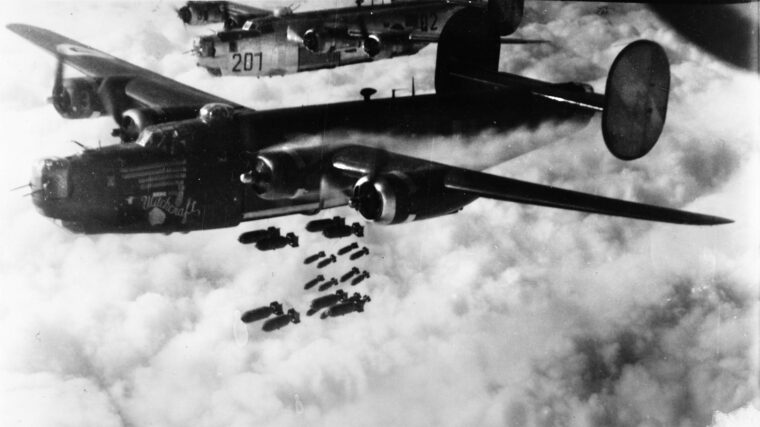
WWII Quarterly Winter 2011
Colonel Albert J. Shower: A Hated Hero of the USAAF
By Robert F. DorrAsk a member of the 467th Bombardment Group whom they hated most and the answer won’t be Göring or Hitler. Read more

WWII Quarterly Winter 2011
Ask a member of the 467th Bombardment Group whom they hated most and the answer won’t be Göring or Hitler. Read more

WWII Quarterly Winter 2011
Crowded in front of the television in Eli Rosenbaum’s office, his staff was taken with a giddy anticipation not often found in employees of the United States Department of Justice. Read more

WWII Quarterly Winter 2011
Wright-Patterson Air Force Base in Dayton, Ohio, is home to the National Museum of the United States Air Force––the oldest and largest aviation museum in the world. Read more

WWII Quarterly Winter 2011
George Catlett Marshall was the greatest American military man of his age. If the United States Army had kicked off the 20th century with the specific intent of constructing a chief of staff to lead it to victory in World War II, it could not have done a better job than what chance provided in the triumphs and travails over the 40 years that molded George Marshall. Read more

WWII Quarterly Winter 2011
The city of Nijmegen, in the southeastern part of Holland and about six miles from the Dutch-German border, is believed to be Holland’s oldest city, going back some 2,000 years. Read more

WWII Quarterly Winter 2011
The Eighth Air Force—the “Mighty Eighth”—became the stuff of U.S. Air Force legend when its fleets of unprotected Boeing B-17 “Flying Fortress” heavy bombers flew massive air raids against the heavily guarded German industrial heartland during the period between the end of January through the middle of October 1943. Read more

WWII Quarterly Winter 2011
“The big day came and we moved off to our positions. Shortly a huge bombing raid commenced on the town of Wesel, followed by an artillery barrage which virtually shook the very ground under us. Read more

WWII Quarterly Winter 2011
The early months of 1942 were dark days for the United States Asiatic Fleet. Much smaller than the Pacific Fleet, and equipped with mostly outdated surface ships, the fleet was in no way capable of winning a serious confrontation with the Imperial Japanese Navy. Read more